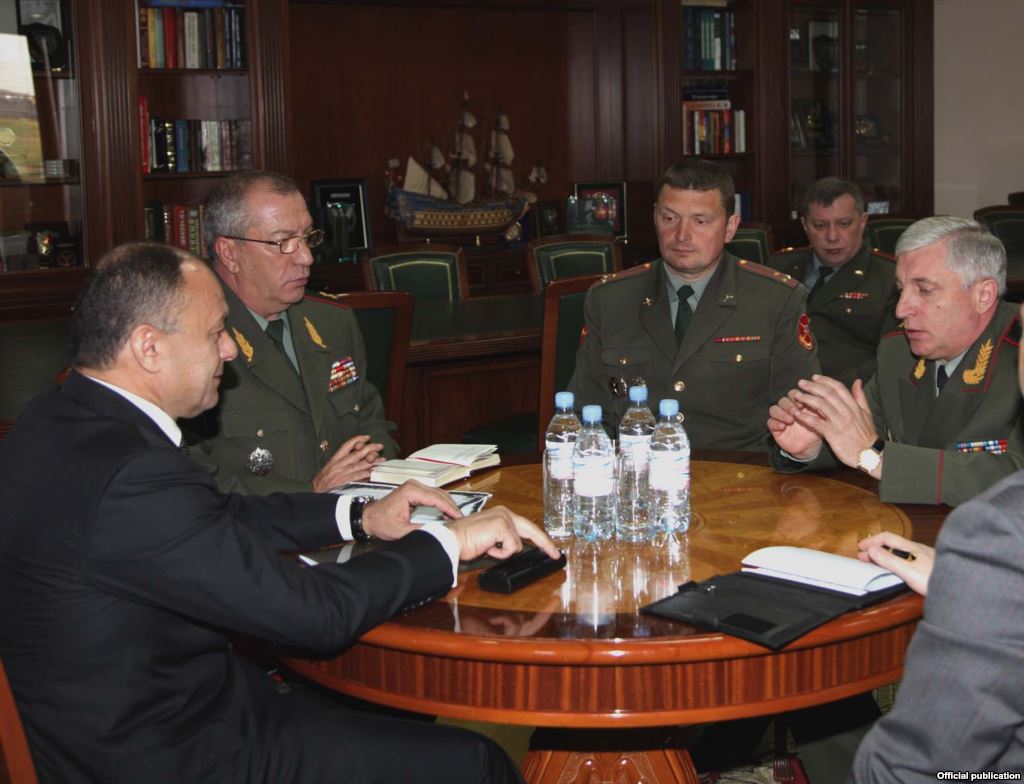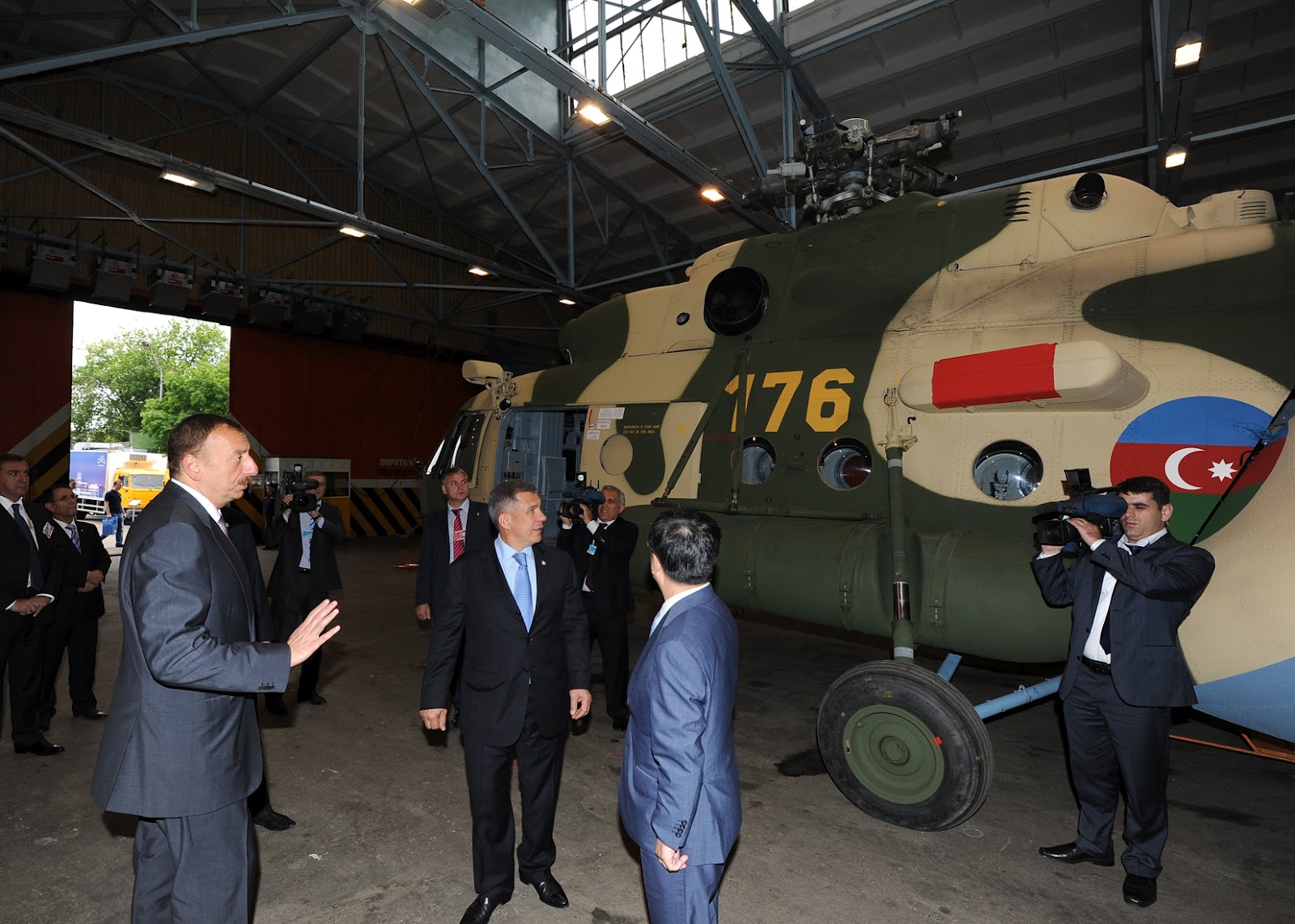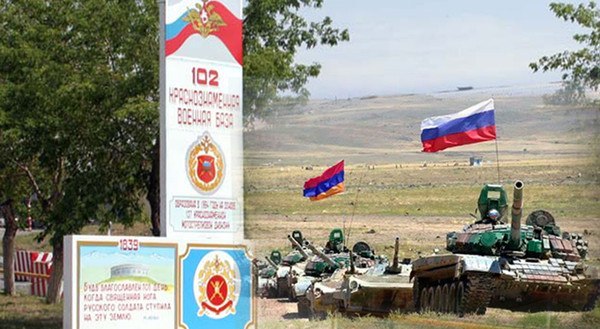Military Development in Transcaucasia: an Arms Race?
Military parade in Baku
(votes: 1, rating: 2) |
(1 vote) |
Ph.D. in History
Since late 1980s, Transcaucasia, the region covering Azerbaijan, Armenia and Georgia, has intermittently been the focal point of flashpoints and low-intensity conflicts, some between the countries themselves. The latest hot conflict dates back to 2008, when Georgia attempted to restore control over South Ossetia, in turn facing a military response from Russia. And who can forget the frozen conflict between Armenia and Azerbaijan over Nagorny Karabakh.
Since late 1980s, Transcaucasia, the region covering Azerbaijan, Armenia and Georgia, has intermittently been the focal point of flashpoints and low-intensity conflicts, some between the countries themselves (all of which have at times participated in combat). The latest hot conflict dates back to 2008, when Georgia attempted to restore control over South Ossetia, in turn facing a military response from Russia. And who can forget the frozen conflict between Armenia and Azerbaijan over Nagorny Karabakh.
Rising Defense Budgets and Capabilities
Numerous controversies have naturally pushed the Transcaucasian states to develop their armed forces at a record pace. For example, during the Mikheil Saakashvili administration, from 2003 to 2007, Georgia increased its defense spending by 24.5-fold, i.e. from USD 30 million to USD 1 billion, totaling an eight-percent share of total GDP.[1] However, after the 2008 war, Tbilisi’s military expenditures plummeted.
Massive defense budgets are specific to Transcaucasia. According to London-based International Institute for Strategic Studies, with their four-to-six percent share of GDP allocated to military spending, Armenia and Azerbaijan are among the world leaders in this regard. In absolute figures, Azerbaijani defense expenditures soared by more than 100 percent over the past four years.[2]
The Transcaucasian countries are also investing in their own defense sectors, the most active being Georgia and Azerbaijan who are manufacturing their own small arms, ammunition and several types of armored vehicles; Armenia similarly also has engaged in domestic production with some success. At the same time, because their domestic capacities are rather sparse, all three countries are focusing on strengthening and modernizing their armed forces by importing weapons and military hardware.
Massive defense budgets are specific to Transcaucasia.
As a result of this type of policy, the countries possess large and well-armed forces. When the quota for the USSR set under the Treaty on Conventional Forces in Europe (CFE) was split between its members under the Tashkent Agreement of 1992, each Transcaucasian country received its own conventional arms quota, i.e. a maximum of 220 tanks, 220 armored vehicles (of these, a maximum of 135 infantry combat vehicles, excluding armored cars and armored reconnaissance vehicles, except for those based on infantry combat vehicles), 285 artillery pieces with maximum 285-mm caliber, 100 combat aircraft and 50 strike helicopters. Although these ceilings are not usually observed, they still somewhat affected the armed stance of these countries until the mid-2000s.
Azerbaijan is without a doubt the regional leader in military strength and defense spending, which stands at about USD 3.7 billion, surpassing both Armenia (USD 447 million) and Georgia (about USD 400 million).[3] Baku has 67,000 servicemen, 340 tanks (T-90SA and T-72), about 700 armored combat vehicles (ACV) and infantry combat vehicles (ICV), and almost 450 artillery pieces. Its air force is also impressive with 14 MIG-29 fighters, 19 SU-25 fighter bombers, about 49 MI-24/25 attack helicopters and 30 Mi-8/17 attack/transport helicopters.[4] Notably, a large portion of Soviet hardware has been repaired and upgraded, while several modernized types have been newly purchased from manufacturers.
The 45,000-strong Armenian army is equipped with about 200 tanks (mostly T-72s with various modifications), about 100 ICVs and 140 ACVs, as well as 240 artillery pieces. The air force lists 15 SU-25s, about 10 Mi-24 combat helicopters and 10 Mi-8/17 attack/transport helicopters.[5]
Finally, the Georgian army, significantly cut after the 2008 conflict, numbers about 20,000 men, about 90 T-72 tanks, 63 ICVs and 137 ACVs, and 185 artillery pieces, while the air force boasts 12 SU-25s and 30 transport helicopters, including Mi-8 and UH-1H Iroquois[6].
Weapons Coming in from Everywhere
Arms supplies are arriving into the region mainly from Russia, Israel, Ukraine, Turkey, as well as from the CIS and East European countries. Some intra-regional transfers also exist; for example in 2005, Georgia sold Azerbaijan six SU-25s. Of greatest interest seems to be the approach of Azerbaijan which prefers to diversify its vendors. In the post-Soviet period, Baku has refrained from buying from Russia, with the first deal concluded only in 2007 when the Azerbaijanis purchased 62 T-72 tanks and BTR-80 armored personnel carriers, probably right off the line.[7] Since that time, Russia's share in the Azerbaijani arms market has been on the rise, ousting previously dominant Ukraine, Belarus and Eastern Europe.
Arms supplies are arriving into the region mainly from Russia, Israel, Ukraine, Turkey, as well as from the CIS and East European countries.
From 2002 to 2010, Kiev sold Baku 12 300-mm Smerch multiple launch rocket systems, three Tochka-U tactical missile launchers, 210 artillery pieces and mortars (54 122-mm 2C3 self-propelled howitzers, 16 D-30 152-mm towed howitzers, and 85 120-mm mortars), 45 T-72 tanks, 132 BTR-70Di upgraded carriers, 14 upgraded MIG-29 fighters, and several more systems. Before the mid-2000s, Baku also bought numerous weapons from Belarus, i.e. 60 T-72 tanks and three 203-mm 2C7 self-propelled artillery pieces.[8]
However, since 2010, Russia has actually grabbed the largest share of the Azerbaijani arms market. From 2010 to 2014, Moscow supplied or contracted out 24 Mi-35M helicopters, 60 Mi-17 helicopters, two divisions of S-300PMU-2 surface-to-air systems, about 130 Т-90SА tanks, 100 BMP-3s, 70 BTR-80/82s, about 450 various pieces of artillery and MRLS units (with 438 items shipped in 2013), 300 shoulder-fired anti-aircraft systems with 1,500 missiles. Russian contracts with Azerbaijan totaled almost USD 2 billion.[9] In the mid-term, Russia might be rivaled only by Israel, which supplies Azerbaijan with Spike-LR and MRLS Lynx antitank rocket systems, as well as the Heron and Searcher drones. However, these supplies will hardly put Russian-Armenian relations at risk, because Armenia's security is upheld both by its own defense assets and the Russian military presence in the country.
Since 2010, Russia has actually grabbed the largest share of the Azerbaijani arms market.
Prior to 2008, the Georgian arms market had been firmly dominated by Ukraine, which had sold 110 Т-72А/B tanks, 52 BMP-2s, 55 BTR-70Di/BTR-80s, five 203-mm 2С7 self-propelled artillery systems, 12 152-mm 2С3 self-propelled artillery systems, two divisions of Buk-M1 anti-aircraft systems, up to 18 Osa-AK/AKM anti-aircraft units and several other systems. The Czech Republic was also active – 71 Т-72М1 tanks, 11 Т-55АМ2 tanks, 24 152-mm self-propelled gun Dana, 42 122-mm towed howitzers, and 12 SU-25К aircraft. After the five-day war of 2008, Georgia effectively suspended weapons purchases for two years. However then the situation changed, for in 2011 Bulgaria provided Georgia with at least 12 2C1 122-mm self-propelled guns, 1,500 submachine guns, 450 light machineguns and 600 RPG-22 single-use grenade launchers.[10]

Defense Minister Seyran Ohanian
meets with Colonel-General Aleksandr Postnikov,
commander-in-chief of Russia’s ground
forces
Armenia is farther behind its two neighbors as far as arms sales are concerned. In addition, Yerevan is considerably more secretive. Its largest partner in military-technical cooperation appears to remain Russia, but of late there have been reports only about the supplies of 35 T-72 tanks and 110 BMP-2s and/or BTR-80s) in 2013. In 2007-2009, Russia is known to have provided Armenia with 480 AK-105 submachine guns, 36 RPK-74M machineguns, three VSS and 52 SV-98 sniper rifles, 32 KS-23 special-purpose carbines, 60 GP-30 rifle-attached grenade launchers, 10 6G30 40-mm hand-held antipersonnel grenade launchers and 603 pistols.[11] However, the shipments appear to be larger and channeled through the CSTO. In 2010, Yerevan reportedly received two L-39 training aircraft, 239 pistols, 60 rifles and 2,501 machineguns from Ukraine.[12] In the 2000s, Armenia also received weapons from Slovakia (35 X-25ML and X-29L aircraft missiles in 2005), Serbia (250 Zastava M93 sniper rifles and 100 AGS-17 automatic grenade launchers in 2007), as well as Bosnia and Herzegovina (200 mortars in 2010).[13]
Table 1. Largest Arms Suppliers to Transcaucasia in 2000-2013.
|
|
Azerbaija |
Georgia |
Armenia |
|---|---|---|---|
|
Russia |
130 Т-90SA tanks 62 Т-72 tanks 100 BMP-3s n/a BTR-80s 70 BTR-80/82 450 artillery pieces, MRLS units and mortars 24 Mi-35М helicopters 60 Mi-17 helicopters 2 divisions of S-300PMU-2 antiaircraft missile systems 300 shoulder-fired missiles |
|
35 Т-72 tanks 110 armored combat vehicles 480 submachine guns 36 machineguns |
|
Ukraine |
45 Т-72 tanks 132 BTR-70Di 3 Tochka-U launchers 12 Smerch MRLS systems 54 2С1 self-propelled guns 16 2С3 self-propelled guns 55 D-30 howitzers 85 120-mm mortars 14 MIG-29 fighters |
110 Т-72 tanks 52 BMP-2s 55 BTR-70Di/BTR-80s 5 2С7 self-propelled guns 12 2С5 self-propelled guns 2 divisions of Buk-М1 antiaircraft systems 18 Osa-АК/АКМ missile systems |
Two L-39 aircraft 16,500 submachine guns 2,501 machineguns 230 pistols 60 rifles |
|
Czech Republic |
71 Т-72М1 tanks 11 Т-55АМ2 tanks 24 Dana self-propelled guns 42 D-30 howitzers 12 SU-25К fighter bombers |
||
|
Bulgaria |
12 2С1 self-propelled guns 1,500 submachine guns 450 machineguns |
||
|
Belarus |
60 Т-72 tanks Three 2С7 self-propelled guns
|
||
Source: compiled by author
Potential Outcomes for Transcaucasian Rearmament
The above data clearly indicate that between 2000 and 2010, Transcaucasian countries stepped up their weaponization programs and have considerably exceeded their CFE quotas. However, this can hardly be called an arms race. This dynamic rearmament rather reflects overall trends specific to all CIS states that are striving to refurbish the outdated and obsolete arsenals they inherited from the USSR. As for Azerbaijan, it appears to be replicating the strategies of the affluent monarchies of the Persian Gulf, which tend to convert their petrodollars into weapons imported from global powers, aka major arms manufacturers.
Also important is the context for the development of the armed forces of each Transcaucasian country. For example, after the failed 2008 war and the proclaimed independence of Abkhazia and South Ossetia, Georgia appears to have given up such aspirations to return the breakaway territories by force, since that would mean a clash with Russia. Hence, Tbilisi is seeking to develop a highly professional force for joint operations with NATO.
Dynamic rearmament rather reflects overall trends specific to all CIS states that are striving to refurbish the outdated and obsolete arsenals they inherited from the USSR.
Azerbaijan is vigorously modernizing its army in view of developing future superiority over Armenia and responding to potential military threats from Iran, as indirectly seen from its purchase of such lethal surface-to-air missile systems as the S-300PMU-2. Since Russia and the United States are deeply engaged in the Nagorny Karabakh settlement, a conflict with Armenia does not appear likely. Moreover, a swift military operation is definitely out of the question.
At the same time, the drastically less affluent Armenia cannot afford an arms race with Azerbaijan. Yerevan seeks to invest its limited resources in upgrading certain weapons systems, apparently aiming to prevent a rapid Azerbaijani advance so that external actors could jump in, as well as to inflict unacceptable military damage on Baku.
The Russia Factor
The Russian military group is obviously formidable and defensive in essence, lacking outright air- and surface-based strike systems.
In this environment, much depends on Russia’s attitudes and capabilities. Notably, Armenia hosts the Russian 5,000-man-strong 102nd Military Base that will remain in the country until 2044 and is reportedly equipped with 74 tanks, 17 ICVs, 148 ACVs, 84 artillery systems including Smerch MRLS, 18 MIG fighters (within the 3624th Air Base, although some aircraft are not combat ready, with ongoing repairs and upgrading), as well as S-300V antiaircraft system and brand new Buk-M1-2. In early 2014, a decision was made to provide the base with an 18-aircraft-strong army aviation group armed with Mi-24 combat helicopters and Мi-8 transport helicopters.[14]
Measured against both Armenian and Azerbaijani forces, the Russian military group is obviously formidable (see the force strength of the above countries) and defensive in essence, lacking outright air- and surface-based strike systems. As long as it remains on Armenian territory, any Azerbaijani action appears unlikely, which makes any Karabakh settlement under discussion peaceful in nature.

Sergei Markedonov: Russia and Conflicts
in the Greater Caucasus:
In Search for a Perfect Solution
***
The region is expected to maintain the status quo, at least in the medium run, primarily in relation to the Nagorny Karabakh issue. The Transcaucasian countries are expected to continue building up their forces, while Baku is not likely to attempt a military solution to the frozen conflict, bearing in mind the regional stability concerns on the part of Russia, the U.S, Turkey and Iran. Prosperous Baku can easily turn to other means, for example soft power mechanisms.
A similar scenario emerges for Georgia, South Ossetia and Abkhazia. Russian troops and border guards deployed in the two latter territories totally rule out direct military conflict, also pushing the sides towards peaceful coexistence and soft power.
[1] M.S. Barabanov, A.V. Lavrov, V.A. Tseluiko. The Tanks of August / Edited by M.S. Barabanov — Moscow: Center AST Publishers, 2009.
[2] The Military Balance 2013. IISS. London, 2013.
[3] The Military Balance 2013. IISS. London, 2013.
[4] Ibid., calculated by author
[5] The Military Balance 2013. IISS. London, 2013
[6] Ibid.
[7] The 2007 reports of Russia and some other states to the UN Register of Conventional Arms // Arms Export magazine, 2008, Issue 4.
[8] UN Register of Conventional Arms and author's information.
[9] Ibid.
[10] M.S. Barabanov, A.V. Lavrov, V.A. Tseluiko. The Tanks of August / Edited by M.S. Barabanov; 2011 and 2012 reports of Russia and other countries to the UN Register of Conventional Arms // Arms Export magazine, 2013, Issue 4
[11] UN Register of Conventional Arms, author's information
[12] Ibid.
[13] Ibid.
[14] Calculated by author using data of blog Bmpd [http://bmpd.livejournal.com]
(votes: 1, rating: 2) |
(1 vote) |






